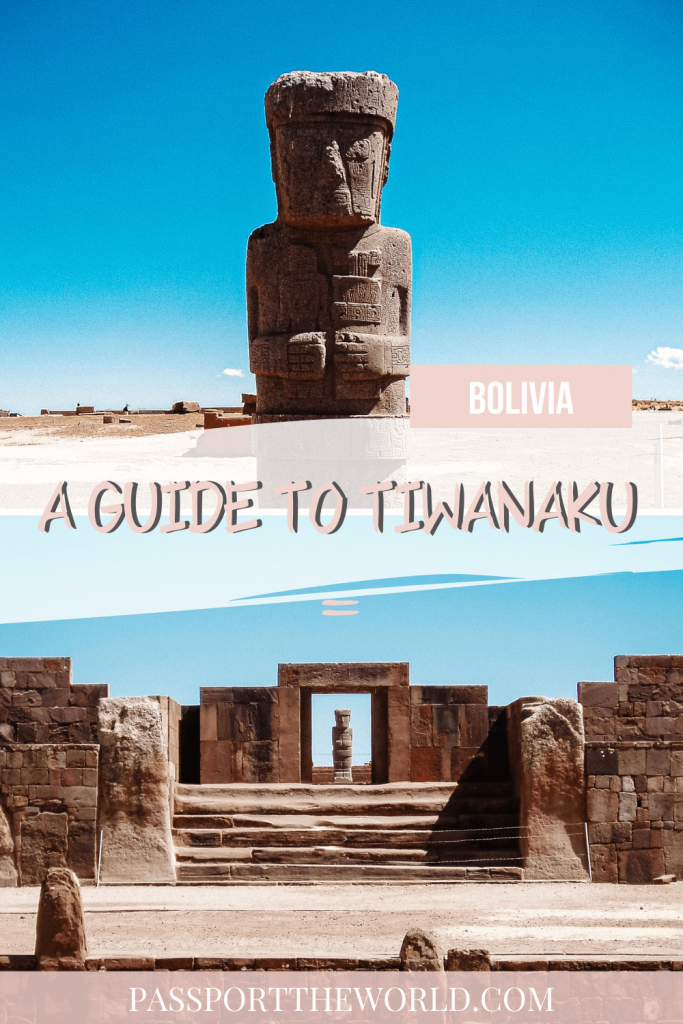Most people know about the Incas, but what about the mysterious Tiwanaku culture? Where the Incas only ruled for a couple of 100 years, the Tiwanaku empire existed for more than 3000 years. Covering the countries Peru, Bolivia, Northern Argentina and a part of Chile, it is called the longest lasting culture, after the Egyptians. Tiwanaku used to be the capital of this empire. Today there is little left of the city but the structures that remain, indicate a highly developed civilization. In this article I’m taking you on a journey to discover the archeological site Tiwanaku, located in Bolivia.
Tiwanaku (or Tiahuanaco), is located at an altitude of almost 4000 meters, at the southern part of the Titicaca Lake. There is little left of the old city, especially if you compare it with the archaeological sites in neighboring country Peru. But a visit is very recommended if you are intetested in history. The remaining buildings make you curious about the culture and life back then. It is fascinating to think that this must have been a bustling capital of a great empire. Are you ready to discover Tiwanaku?
The Tiwanaku culture is said to have originated around 1400 BC. The first people lived a nomadic life but started to settle down, because of the convenient circumstances around the Titicaca lake at that time. They built their houses and started working in agriculture and ceramics.

The city of Tiwanaku, was build between 45-700 A.D. and became one of the most important settlements of the area. The city soon attracted people from all over and turned into a very well-organized society. People were put to work in different fields such architecture, art and agriculture and their knowledge was impressive.
Temples and buildings were built so precisely that they withstood earthquakes, something very common in the region. Also, because crops each grew at a different height, irrigation systems had to be adapted accordingly. Aqueducts were built, both above and below ground, to ensure water supply and sewage. Roads were developed and an army was established to conquer the surrounding settlements.
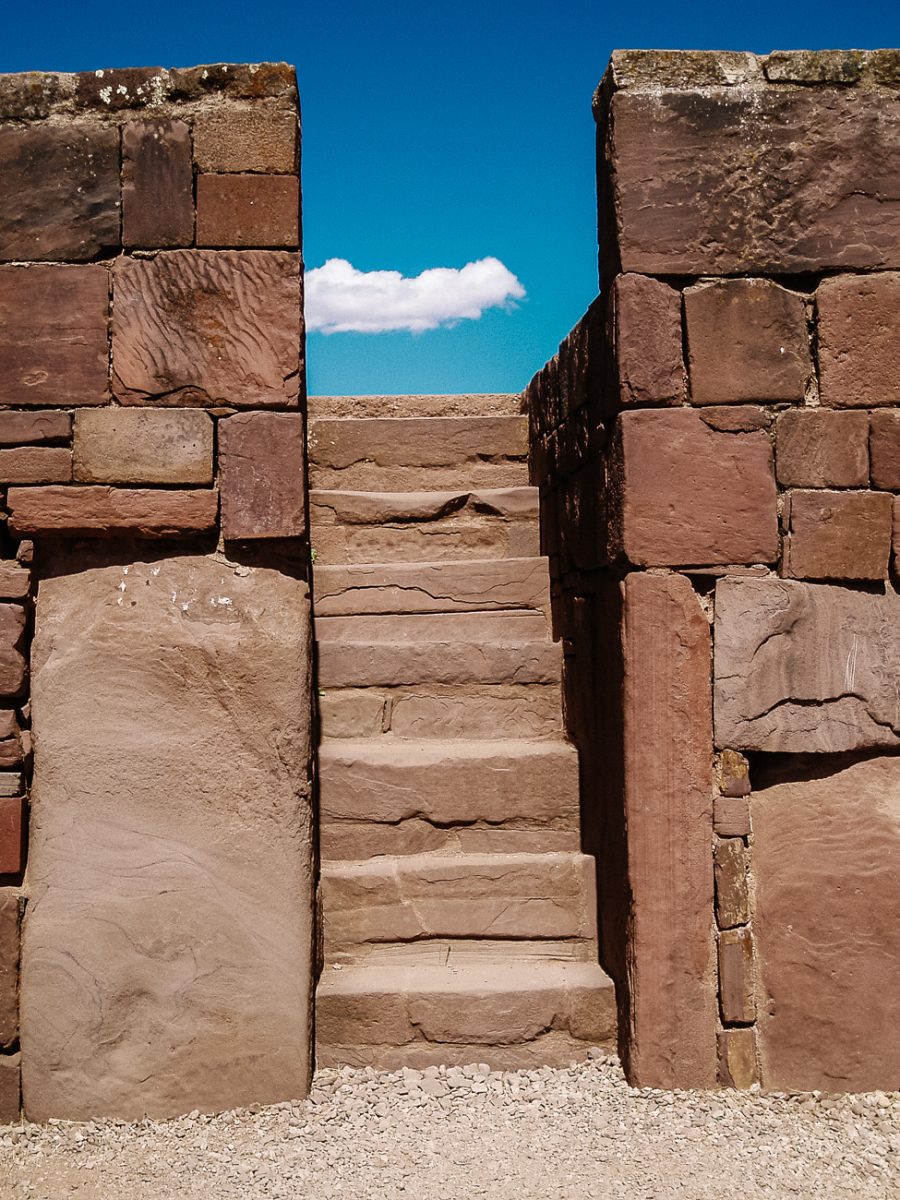
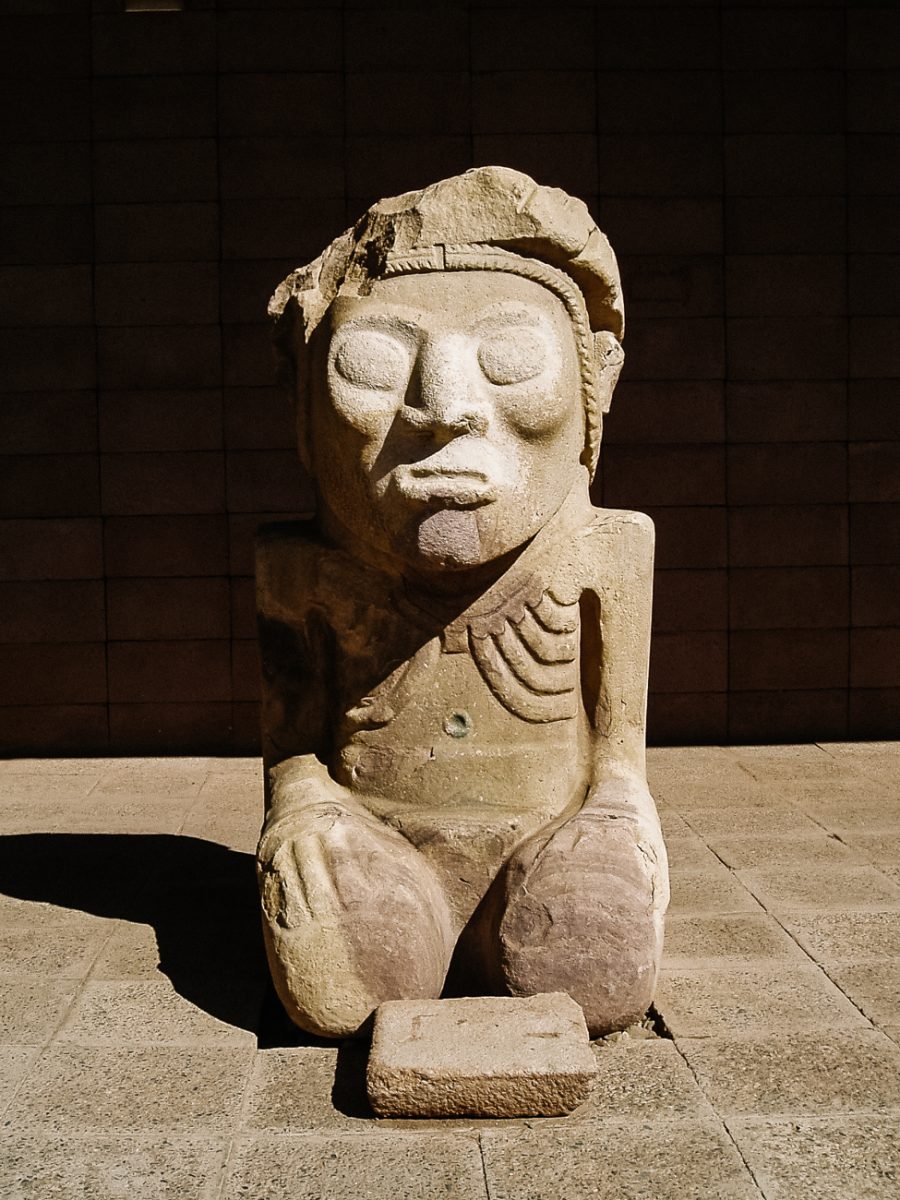

By 600 A.D. the Tiwanaku empire extended to an area of 600.000km2, covering the current countries of Peru, Bolivia, Northern Argentina and a part of Chile. According to studies, more than 60.000 people would have lived in the city, making the altiplano, surrounding the Lago Titicaca the most densely populated area of South America.
It is said that the empire and city slowly fell apart due to climate changes, around 1200 A.D. Months of heavy rainfall and months of drought (because of el niño) resulted in reduced harvest and not enough food to maintain the people. The empire lost power and split in different settlements. Different civilizations such as the Aymara, Colla and Incas, took over the empire in the years after, before the Spanish arrived in 1532.
This would have been the gateway to a large temple complex, where rituals took place and gods were worshiped. Only the gate is still standing. I personally love this structure, because of the detailed relief and figures. There are several theories about the meaning of these figures and signs. It could be a calendar with cosmic explanations for example. But no studies have been confirmed.
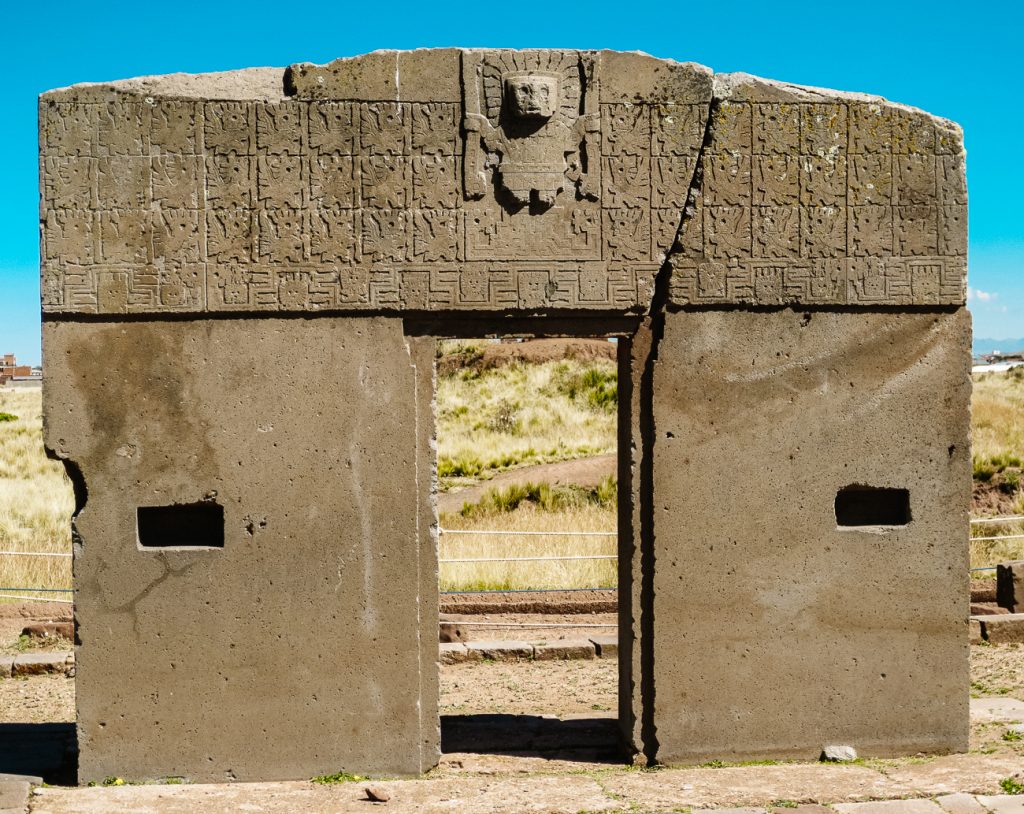
This is one of the most characteristic places of Tiwanaku, an image that can be seen in many books and media. Astronomical calculations determined the location and construction of the statues and temples during the Tiwanaku culture. This structure is perfectly constructed so that the sun rises perpendicularly to the center of the entrance gate, during the equinox and solstice.

On the site you will find several monoliths, large statues of important priests or kings. One of the largest monoliths, the Benett monolith, has a height of 7.30 meters tall and weighs more than 20 tons. It used to be located in the city of La Paz. Nowadays it can be observed in the museum of the complex. The stones used for the buildings and statues were often found at a distance of up to 100 km. It is incredible and still unclear how they were able to transport these heavy rocks to the city.

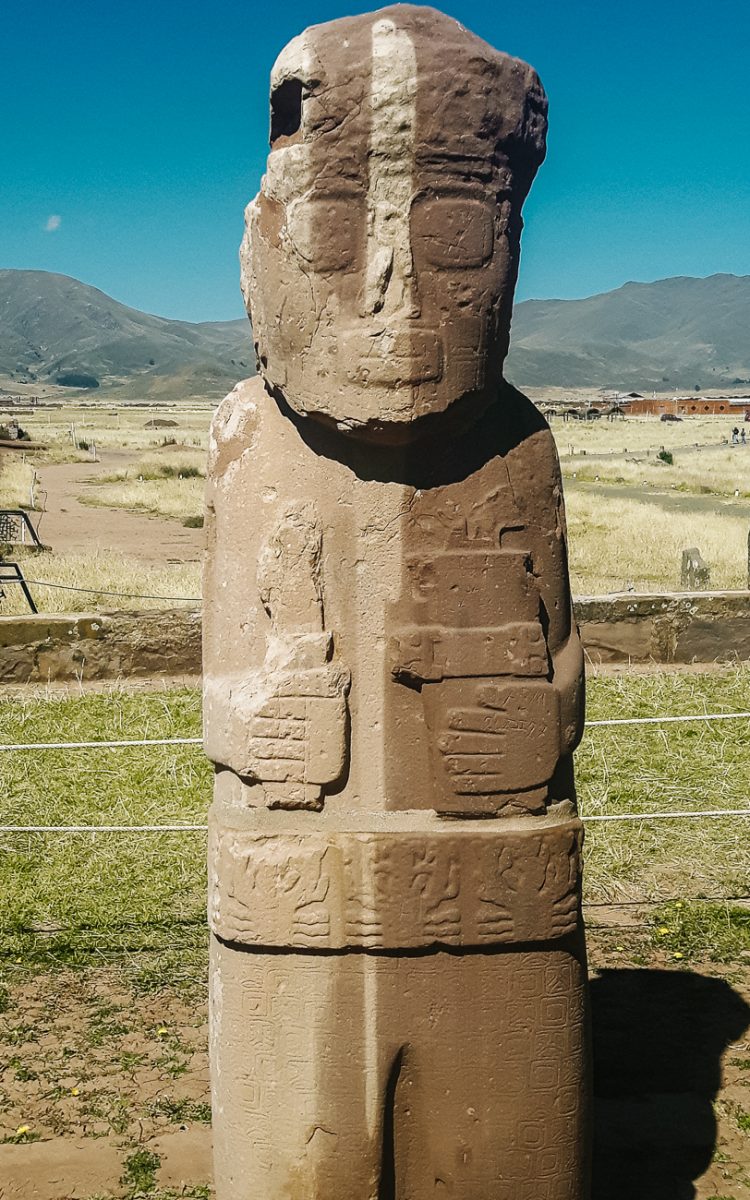
This is a former underground temple, about 2 meters lower than the surrounding area. At this place you will find 175 different carved heads, coming out of the walls. The special thing is that they are all unique, showing different ethnical features, from Asia, Africa and Arabic countries. Something that makes you think. Scientists have been discussing for years, that there must have been already contact between different civilizations during that time. When you see these heads, you can hardly think otherwise.
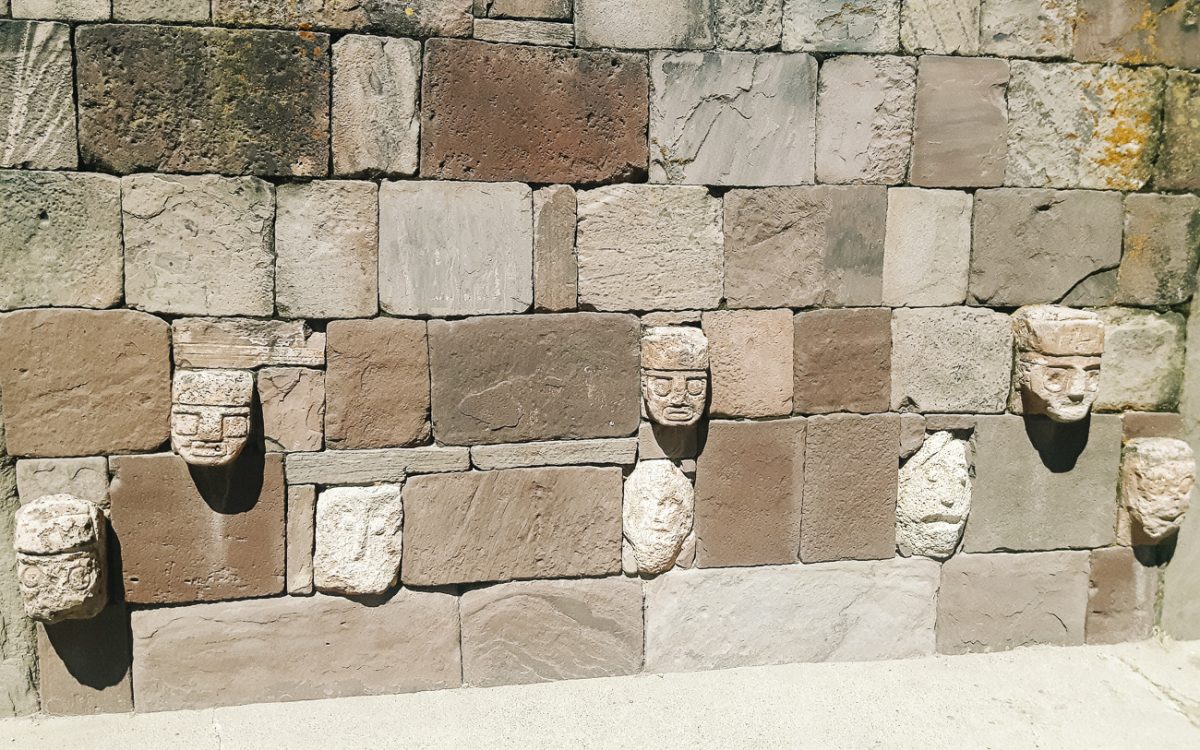

Around the complex there are still many parts under the vegetation. Some are excavated and restored, but a large part still needs to be explored and studied.

Tiwanaku has always played an important role in Bolivian society. Former president Evo Morales attended various Andean spiritual ceremonies, during his first inauguration in 2006 and the years after, when he was reelected.
Tiwanaku is located 72km from La Paz. You can reach the archaeological site within 1.5 to 2 hours from the city center of La Paz (depending on the traffic conditions). You can take a public bus or go for an organized tour with a tour operator, such as Red Cap tours. If you go by yourself, there are local guides at the entrance, when you are interested in understanding more of the culture and history. The compex has a museum with information and pieces about the site. There is another archaeologiacl museum “Museo de Arqueología de Tiwanaku” in La Paz, wich is a great preparation for your visit.
Do you want to read more about Bolivia? In this article you’ll find an overview with what to do in Bolivia, including the most beautiful destinations. Also, have a look in the Bolivia library with many articles about this beautiful country. Such as the best things to do in Sucre, a city guide for Copacabana, a tour on the Bolivian salt flats, the Bolivian Inca trail, a visit to the Potosí mines, shopping in La Paz, how to use the cable car in La Paz but also information about safety.
This article may contain affiliate links. If you purchase something using one of our links, we may receive a commission at no extra cost to you, which helps us keep this blog alive. Thank you for your support! Please see our disclosures for more information.
